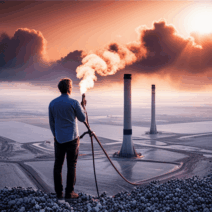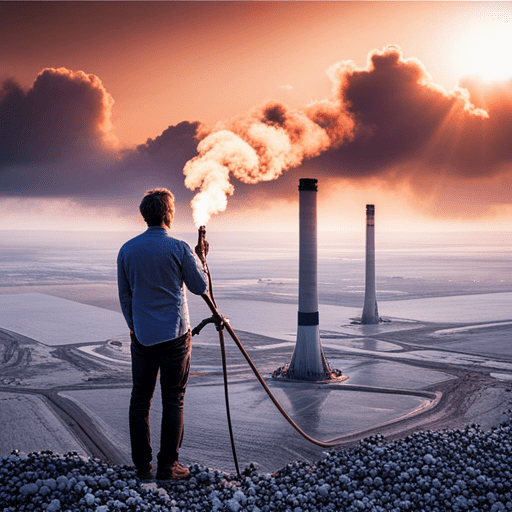Energy conservation, at its core, refers to the practice of using less energy by employing more efficient technologies or practices. It embodies an intrinsic philosophy—a deliberate endeavor to curtail unnecessary energy consumption. The urgency of this concept has garnered considerable attention, as we navigate the ramifications of increasing energy demands amid the looming specters of climate change. Essentially, energy conservation is not merely a choice; it is a necessity that compels us to reimagine our interactions with energy resources.
A simple definition suffices: energy conservation is the strategy through which we minimize energy usage without compromising productivity and comfort. This extends beyond merely switching off lights or unplugging devices; it encapsulates a broader paradigm that influences architectural designs, industrial methodologies, and even individual behaviors. To delve deeper, we can explore the multifaceted dimensions of energy conservation, illustrating its theoretical underpinnings and pragmatic applications.
To comprehend the significance of energy conservation, one must first acknowledge the relationship between energy consumption and environmental sustainability. The energy we utilize often derives from fossil fuels such as oil, coal, and natural gas, which contribute to greenhouse gas emissions. These emissions create a detrimental impact on our environment—warming the planet and disrupting ecosystems. Consequently, energy conservation becomes not just an environmental imperative but also a social responsibility. The act of conserving energy directly reduces our carbon footprint, thereby fostering a healthier planet for future generations.
So, how can we implement energy conservation in our everyday lives? Real-life examples abound, each providing practical insights into the myriad ways we can engage with this vital practice.
Consider the realm of households. Many households unknowingly waste energy through inefficient appliances and systems. A quintessential example is the refrigerator—integral to modern living yet often taken for granted. An energy-efficient refrigerator can use up to 50% less energy than older models. Transitioning to ENERGY STAR-rated appliances is a subtle yet impactful step towards energy conservation. By investing in these technologies, households can dramatically reduce their energy bills while simultaneously playing a pivotal role in resource preservation.
Let’s pivot to the common practice of heating and cooling. Often, houses are over-engineered for comfort. Utilizing programmable thermostats enables homeowners to schedule temperatures based on occupancy, effectively managing energy use during peak and off-peak hours. In fact, turning your thermostat down by just a couple of degrees in winter or raising it in summer can equate to significant energy savings—up to 10% annually. These actions do not require sacrifices; rather, they promote a smart interaction with our heating and cooling systems.
Moreover, we must not overlook the architectural innovations that facilitate energy conservation. Passive solar design epitomizes an advanced approach, leveraging the sun’s energy to maintain comfortable indoor temperatures without reliance on conventional heating or cooling systems. By orienting a home to maximize sunlight exposure, utilizing thermal mass materials, and incorporating energy-efficient windows, it is possible to reduce reliance on artificial energy sources. This approach transcends mere conservation; it embraces a holistic perspective on habitat design, nurturing our connection to nature.
Transitioning from residential strategies, the realm of industrial energy conservation merits scrutiny. Industries are notorious for their high energy consumption, yet they possess enormous potential for conservation. For instance, cogeneration systems—where heat produced during electricity generation is captured and used for additional energy needs—exemplify a sophisticated approach to energy efficiency. This not only conserves energy but also enhances operational efficacy, ensuring that industrial activities are conducted with a lesser environmental toll.
Furthermore, businesses can adopt energy management systems that continually monitor and optimize energy consumption. This shift from reactive to proactive energy management signifies a paradigm shift—business owners become stewards of sustainability, driving economic and environmental progress concurrently. The potential for corporate energy conservation is vast, with studies suggesting that effective energy management can reduce energy usage by upwards of 30%. Imagine the collective impact if businesses worldwide harness this potential.
Energy conservation also touches on the transportation sector, an often-overlooked arena. The rise of electric vehicles (EVs) signifies a pivotal change in how we perceive motorized transportation. EVs promise far greater energy efficiency compared to their gasoline counterparts. However, it is not solely about adopting new technologies; it also necessitates behavioral adjustments. Carpooling, utilizing public transport, or even cycling are practical examples of reducing energy consumption, each action exemplifying a conscious choice to prioritize sustainability over convenience.
Our understanding of energy conservation can also extend beyond individuals and businesses—communities can rally together to adopt broader initiatives. Energy conservation campaigns at the municipal level can advocate for renewable energy sources, such as wind and solar power, fostering communal awareness and participation. High-impact community programs can galvanize collective action, enhancing public engagement and commitment to energy conservation projects.
In conclusion, energy conservation represents a critical component of environmental responsibility, requiring a strategic shift in our perceptions and practices towards energy consumption. It is an engaging narrative of innovation, commitment, and shared responsibility. As we become cognizant of the pervasive energy crisis affecting our planet, we must cultivate a culture of conservation—one that prioritizes sustainable choices in every facet of our lives. Embracing energy conservation not only promises to alleviate environmental strain but also heralds a new era of mindful consumption, fostering an ecosystem where both the planet and its inhabitants can thrive harmoniously.





